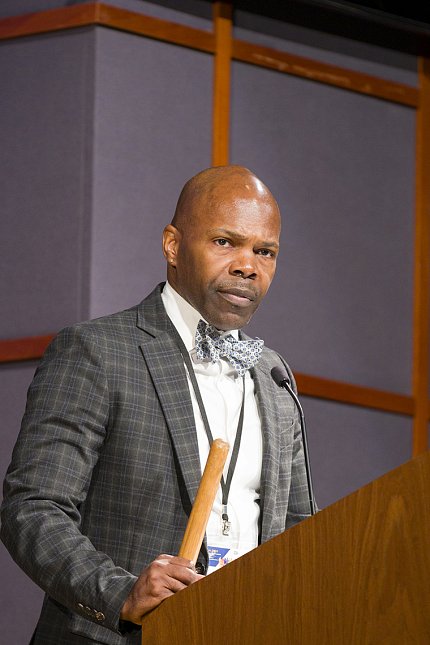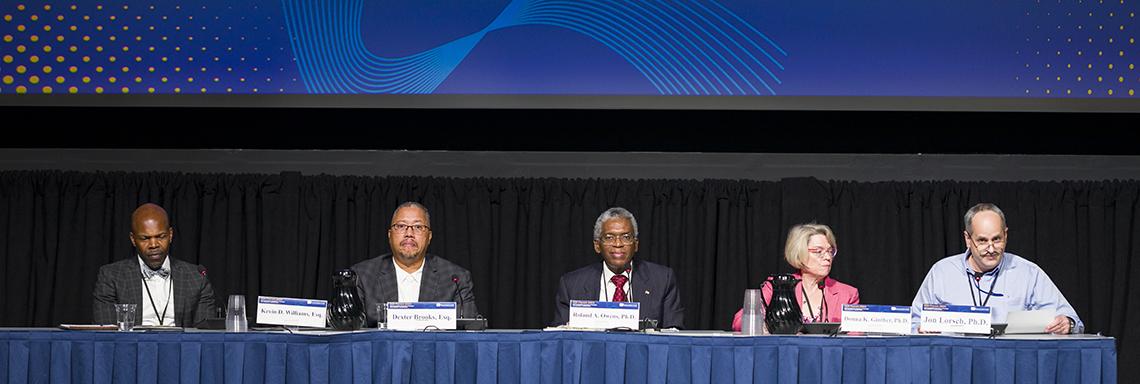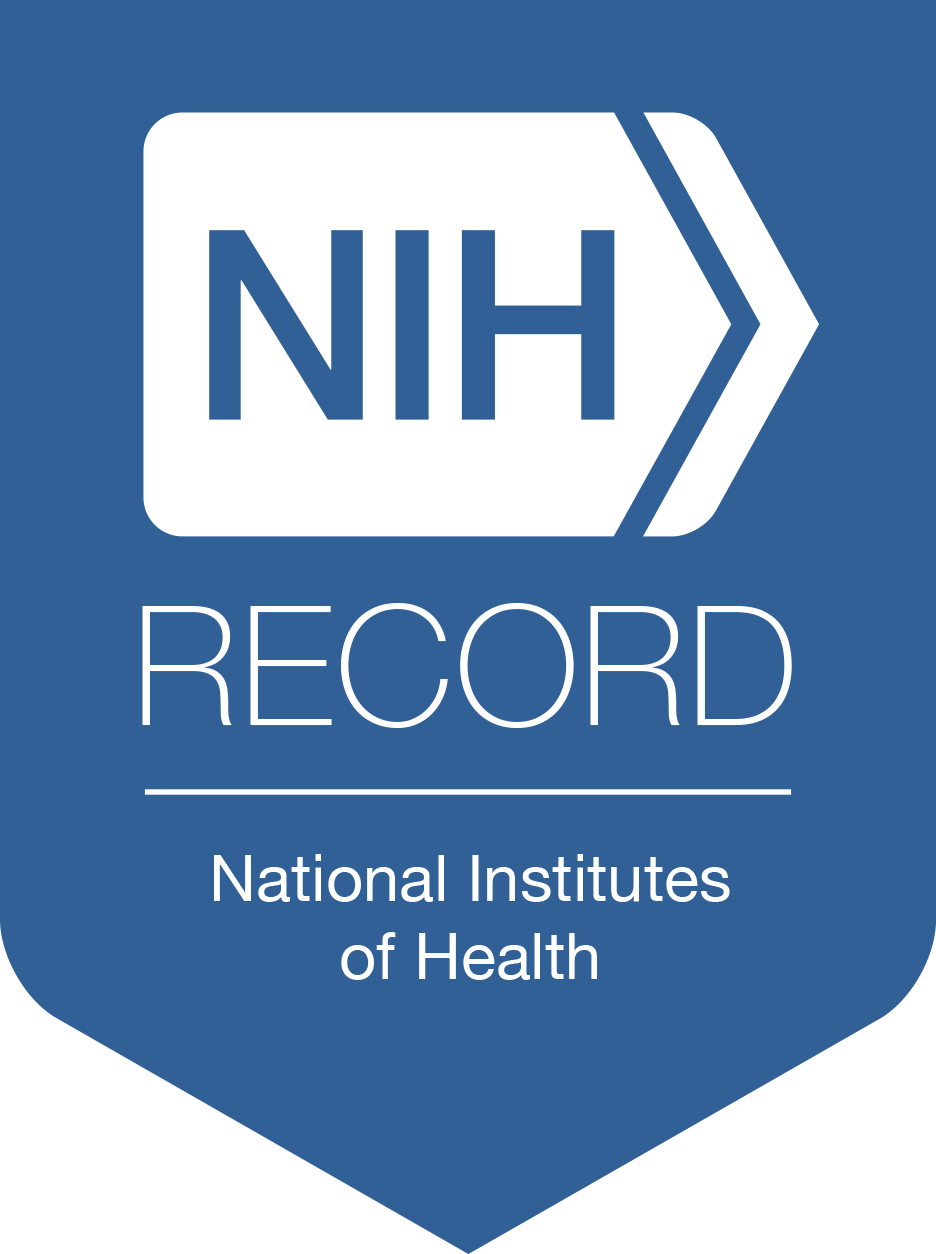EDI Forum Seeks to Build Stronger, More Unified NIH

Early in her career, NIH Director Dr. Monica Bertagnolli regularly worked in environments where she was the only woman and the only person from a rural part of the country.
“I remember working really, really hard to fit in and prove that I was worthy of being there,” recalled Bertagnolli during the opening plenary session of the inaugural Equity, Diversity, and Inclusion (EDI) Forum. “I know how hard it is when you’re an ‘odd duck,’ when you feel like you’re on the fringe and don’t necessarily belong.”
Over her career, Bertagnolli has learned to embrace different cultural and social perspectives. “It’s not about fitting in.” Rather, “we want you for who you are and the magic you bring.” Everyone plays a critical role in creating a supportive and healthy work environment.
“Building a model workforce with an ongoing commitment to equal employment opportunity (EEO) requires support from agency leadership,” Bertagnolli said. Her predecessors, Dr. Francis Collins and former Acting NIH Director Dr. Lawrence Tabak, were both committed to equal employment opportunities at the agency.
Held in Bldg. 45’s Natcher Conference Center, the two-day forum featured in-person trainings and presentations to foster a deeper understanding of the numerous lines of business that EDI is mandated to perform as the NIH’s Office of EEO.
Department of Health and Human Services (HHS) Secretary Xavier Becerra has said implementing diversity, equity, inclusion, and accessibility (DEIA) programs is the toughest job the Department will have, noted Cheryl Campbell, HHS assistant secretary for administration. Changing culture and mindset are not easy to achieve.
“We learned quickly that it takes unwavering commitment to restructure longstanding policies and instill DEIA principles into our way of working,” she said. “You must have reliable data, stakeholder engagement, leadership, conviction, relevant programming, and a culture of collaboration.”

DEIA-focused initiatives help organizations address unconscious bias, discrimination and unfair treatment that may exist within their teams. Employees who work in an environment that values equity and inclusion will have the best chance to grow, adapt and succeed in their roles.
“Forging a better world doesn’t happen without experiencing challenges,” Campbell said. “It takes intentional and incremental changes. At times, it can feel like you’re moving backwards rather than forward.”
Sixty years ago, President Lyndon Johnson signed the Civil Rights Act of 1964. The law prohibits discrimination in public places, the workplace, schools and federally assisted programs. It also established the Equal Employment Opportunity Commission (EEOC), which enforces laws that make discrimination illegal in the workplace.
The EEOC required all executive federal agencies to create an EEO office. In 2003, the EEOC released Management Directive-715, a policy guide to help federal agencies establish and maintain model EEO programs.
“Almost every facet of EDI is in service to the requirements laid out in the EEOC regulations and Management Directive-715,” said Kevin Williams, director of NIH’s Office of Equity, Diversity and Inclusion. “The work of EDI will endure.”
While civil rights enforcement is EDI’s charge, “it remains all our responsibility,” said Williams.
Although the EEOC was established in the 1960s, the federal government first recognized a policy of nondiscrimination in 1948. Back then, President Harry Truman signed two executive orders—one desegregated the armed forces; the other desegregated the civilian workforce.
“What we were saying at the time was the federal government should be the model employer,” said Dexter Brooks, director of federal sector programs within the EEOC’s Office of Federal Operations. “If folks come to the federal government, they should expect a transparent, open process that allows them to compete based on their talent, not because of their race or religion.”
In 1978, the EEOC assumed responsibility for enforcing anti-discrimination laws applicable to the civilian federal workforce as well as coordinating all federal EEO programs. The Commission developed uniform enforcement standards to apply throughout government, including standardized data collection and data sharing, joint training programs, investigations and consistent policies.
The Commission prefers to partner with federal agencies to help remove barriers to opportunity, Brooks said. Their approach is to use statistics to identify policies, practices, and procedures that might limit opportunities for groups.
“We’re not confrontational,” Brooks said. “We’re looking for better paths forward.”
More recently, President Joe Biden signed an executive order that said, “we must be mindful of the diversity of our citizens and make sure the services we’re providing our citizens reach all our citizens.”
The administration has revised racial and ethnicity categorizations for the federal government. This gives them the ability to make more informed decisions about emerging areas in DEIA, he said.
“This work will continue,” Brooks concluded. “We’ve seen so many challenges over the years. People sometimes say we take two steps forward, one step back. But we always have our eyes forward.”
